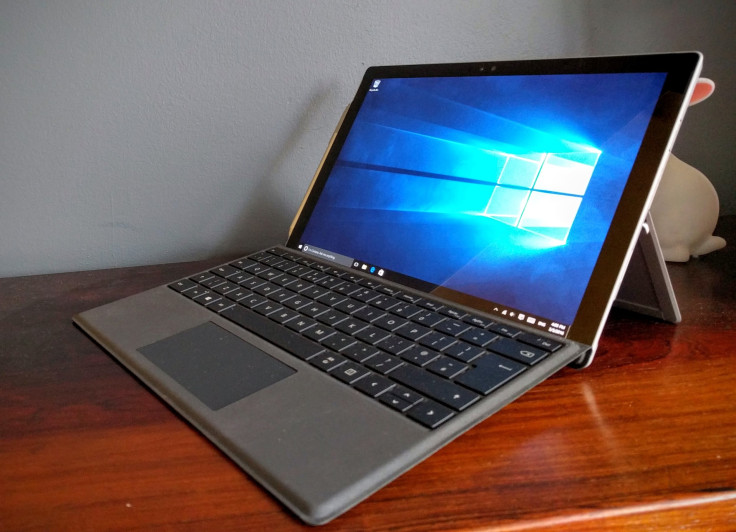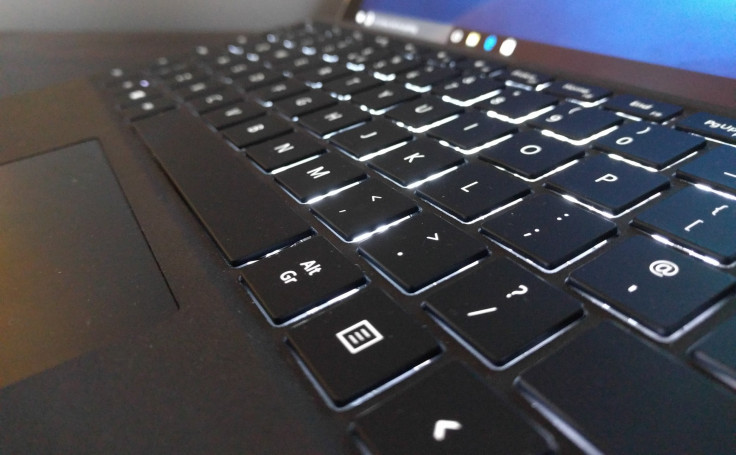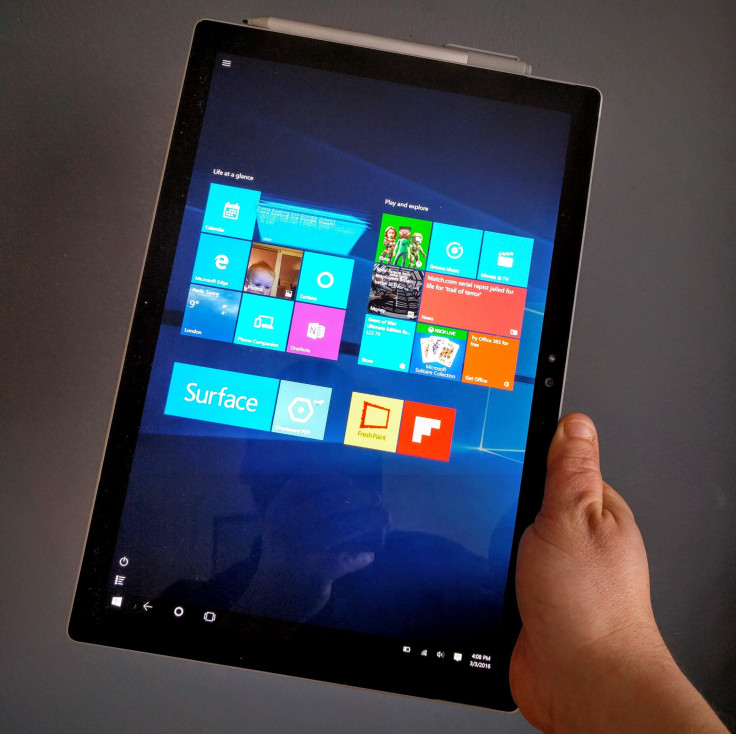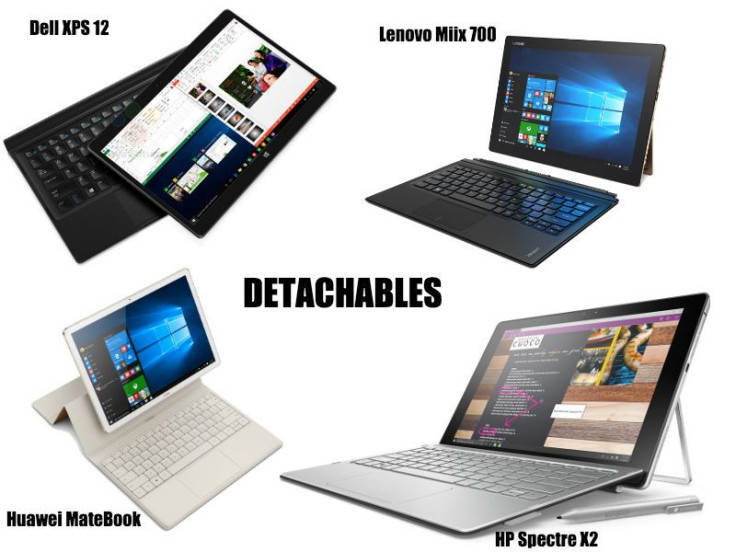Surface Pro 4 Review: Are 'Detachables' The Savior Of The PC Industry?

Microsoft kicked off the "detachables" trend with the original Surface, but now everyone is getting in on the action. From Apple’s iPad Pro to Huawei’s MateBook, manufacturers everywhere are betting that these laptop-tablet convertibles will be the savior of the PC industry, which in 2016 expects its fifth straight year of decline.
Microsoft has a bigger stake than any of these other companies in seeing the PC market rebound. The company is built on the success of Windows and software bio applications like Office, and therefore the move away from PC-based computing to smartphones and tablets is a grave existential threat, regardless of buzzy initiatives like Hololens, Xbox and its doomed mobile efforts.
Microsoft’s efforts in the smartphone sphere have failed dismally despite billions spent to develop its own software and acquire hardware. While there has been minimally more success on tablets, the company is still trailing way behind Apple’s iPad and the hundreds of Android tablets on the market.

And so, in 2012 Microsoft tried something different. It introduced the Surface, a 2-in–1 device it proclaimed would offering both the convenience of a tablet and the productivity of a laptop, and replace both devices. It featured some genuinely innovate engineering and design, including the hinged kickstand and ultra-slim keyboard cover.
Since then Microsoft has launched six more versions of the device, split between the consumer-focused Surface range and the business-focused Surface Pro range. The latest, the Surface Pro 4, is the culmination of what Microsoft has learned from previous generations and offers the most complete solution to date.
Whether it can save the PC industry is too much for this column to ask, but can it replace your desktop?
For those who have never used a Surface device before, the best way to describe it is as a full-fledged desktop PC in tablet form. It comes with a range of the latest Intel processors, right up to the most powerful Core i7 with 16GB of RAM. With this setup you can do anything you could with a desktop PC, including video editing and high-end gaming.
The tablet has a 12.3-inch screen, slightly bigger than the 12-inch screen on the Surface Pro 3, and yet Microsoft has kept the chassis the same size. That said, the Surface Pro 4 is slightly thinner and lighter. The entry-level model, which uses Intel’s Core M processor, is significantly lighter (and quieter) as it doesn’t have the fan required by the more powerful models.

All this means that carrying the Surface Pro 4 around with you is not a problem. With a keyboard cover attached, the device weighs slightly over 1 kilogram, which is slightly heavier than a MacBook, and almost exactly the same as the iPad Pro with its keyboard case.
Unlike the MacBook or iPad, however, the Surface Pro 4 continues to offer a full-sized USB port, meaning you can easily hook up accessories like mouses, hard drives and USB sticks. Microsoft says it listens to what customers want, and this is why it hasn’t gotten rid of the USB port.
As well as being slightly bigger, the screen has also been given a resolution upgrade (2736 x 1824 pixels) over the previous generation (2160 x 1440) and is among the best displays you are going to find on any tablet or laptop. The kickstand is once again beautifully designed and built, feeling reassuringly solid yet endlessly flexible, meaning it is easier to use the Surface Pro 4 when it is sitting in your lap.

The Surface Pro 4 comes with the latest Surface Pen, which has been redesigned to look more like a real pen, and now comes with interchangeable nibs and can detect 1,024 levels of pressure, thanks to the PixelSense display technology built into the screen.
The pen offers one of the most satisfying and realistic drawing and writing experiences on any tablet. Add to that the ability to launch OneNote with a single click of a button (even when the Surface screen is locked) or launch Cortana with a long press of the button, and the Surface Pen (which is included in the box) is a big bonus.
Arguably the best feature of the Surface range has been the keyboard covers. The latest model (which is not included in the box ) is a significant upgrade over its predecessor, with a glass trackpad replacing the poor plastic version; the keys are now better spaced and with more travel, making typing a pleasure. There is also an option to have a fingerprint sensor built into the keyboard for extra security.

Speaking of security, the Surface Pro 4 is the first model to come with Windows Hello, a feature of Windows 10 that allows you to log in with your face. The feature works brilliantly and makes it so easy to unlock the device without using your hands, and works in most lighting conditions and is reliable around 95 percent of the time.
While the performance is superb, the battery life of Microsoft’s device doesn’t measure up, typically lasting less than a full day of normal use. The other major drawback is that as a tablet, the Surface really doesn’t work. Compared to the iPad Air it is very cumbersome and bulky, and the range of apps on the Windows Store pales in comparison to Google’s Play Store or Apple’s App Store. That said, this is a device built for Windows 10 and works really well with Microsoft’s latest software.
The Surface Pro is available now for $799, which is $100 less than the price at launch, but this is for the entry-level model (Core M, 4GB RAM, 128GB SSD) and no keyboard cover. Considering a keyboard cover is crucial to making the Surface Pro 4 work, and the latest Type Cover will set you back a further $130, the real entry-level price is $929.
For those looking to get the more powerful version, the Surface Pro 4 model with a Core i7 processor, 16GB of RAM and 256GB storage is priced at $1,699. An iPad Pro with 128GB storage and a keyboard cover is $1,118, while Microsoft’s own Surfacebook laptop is priced at $1,499.
The Surface Pro 4 is undoubtedly the best Microsoft has offered in this series so far, with Gar industrial design, stunning screen and great connectivity. However, while it is a very competent laptop replacement, it still falls some way short as a tablet replacement, due to its size and the lack of quality, tablet-optimized apps available. That said, this system is aimed at business users, so they may be less worried about a lack of "Clash of Clans" than typical iPad users.
When Microsoft unveiled the first Surface in 2012, many saw it as a direct attack on Microsoft’s OEM partners, the Dells, HPs and Lenovos that make devices for the Windows world. But as the Redmond, Washington, company said then, it was really a way of showing the industry where the future lay in devices, much like Google's Nexus line of Android-powered phones.
In the time the Surface has been around, we have seen the PC market continue to decline, with Gartner predicting 2016 will be the fifth straight year of decline in the PC shipments. But it is also predicting a return to growth in 2017 (albeit a mere 4 percent), and devices like Surface could be the reason why.

According to IDC, “detachables” are growing fast, with sales of Surface-like devices in the final three months of 2015 double what they were during the same period last year. “One of the biggest reasons why detachables are growing so fast is because end users are seeing those devices as PC replacements,” said Jean Philippe Bouchard, research director at IDC.
While Microsoft defined the detachable market with the Surface range, it has also inspired others to follow suit. Not only has Apple launched the iPad Pro, but on the Windows side of things, Dell has launched its XPS 12, HP has its Spectre X2 and Lenovo has its Miix 700.
Add to these the launch at the Mobile World Congress last week of Huawei’s first-ever PC, the MateBook, which is a direct Surface competitor, and it is clear that PC makers are hoping “detachables” will be the savior of the PC market.
Helping to drive this move to a new type of PC is the combination of Windows 10 and Intel's power-efficient Skylake processors, which Gartner says will enable “new form factors with more attractive features.” While tablets have been utilized in business to date, their usefulness has been limited, and 2-in-1 devices with more flexibility could offer a much better solution.
The PC industry may never return to the levels it reached at its peak in 2011, but with new form factors and innovative designs, and despite what many suggest, the PC is far from dead.
© Copyright IBTimes 2025. All rights reserved.





















